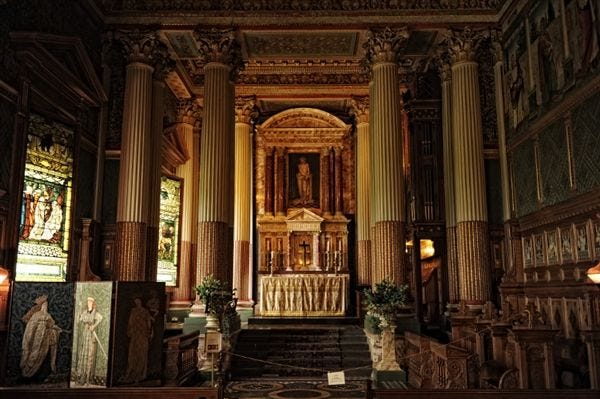If you want a fine point on the stabilizing and nurturing properties of Liturgy, listen to Sister Monica Joan from the BBC series Call the Midwife: “The Liturgy is of comfort to the disarrayed mind. We need not choose our thoughts; The words are aligned, like a rope for us to cling to.” If you want an analogous argument for the adornments of the church, albeit ensconced in a rich tapestry of plot lines and mishaps, you’re looking for the family chapel in Evelyn Waugh’s classic, Brideshead Revisited. The resident Marchmain family is disorganized, diffuse, and disordered in the extreme, except that a nagging Catholic faith seems to live inside the chapel on the estate and “twitch on the thread” of fate at the edge of family affairs, ruining all plans for self-aggrandizement.
“They’ve closed the chapel at Brideshead, Bridey and the Bishop; Mummy’s requiem was the last mass said there. After she was burried the priest came in - I was there alone. I don’t think he saw me - and took out the altar stone and put it in his bag; then he burned the wads of wool with the holy oil on them and threw the ash outside; he emptied the holy water stoup and blew out the lamp in the sanctuary and left the tabernacle open and empty, as though from now on it was always to be Good Friday. I suppose none of this makes any sense to you, Charles, poor agnostic. I stayed there till he was gone, and then, suddenly, there wasn’t any chapel there any more, just an oddly decorated room. I can’t tell you what it felt like. You’re never been to a Tenebrae, I suppose?” “Never.” “Well, if you had you’d know what the Jews felt about their temple. Quomodo sedet sola civitas. . .”




